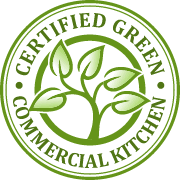Our carbon footprint is far too high, and this does not only damage the environment, but also harms our health and even causes human death. Especially children, who are still very vulnerable, are hit by the climate change and it isn’t exceptional for children in poor countries to die as a result of global warming. In developing countries, malnutrition and malaria are the most common causes of death. And as flooding and drought, both a consequence of the effect of climate change, destroy food crops, malnutrition will occur even more often if we don’t reduce our carbon footprint. The number of people with malaria is also increasing, because mosquitoes now can survive in countries which were too cold before the climate changed.
The fact that people can actually die from pollution, highlight the need for a drastic change in as well production methods as costumer’s behaviour. Maybe eco-labels could help us realise this change by showing the ecological impact of every product.
(source)
Famke De Ro








